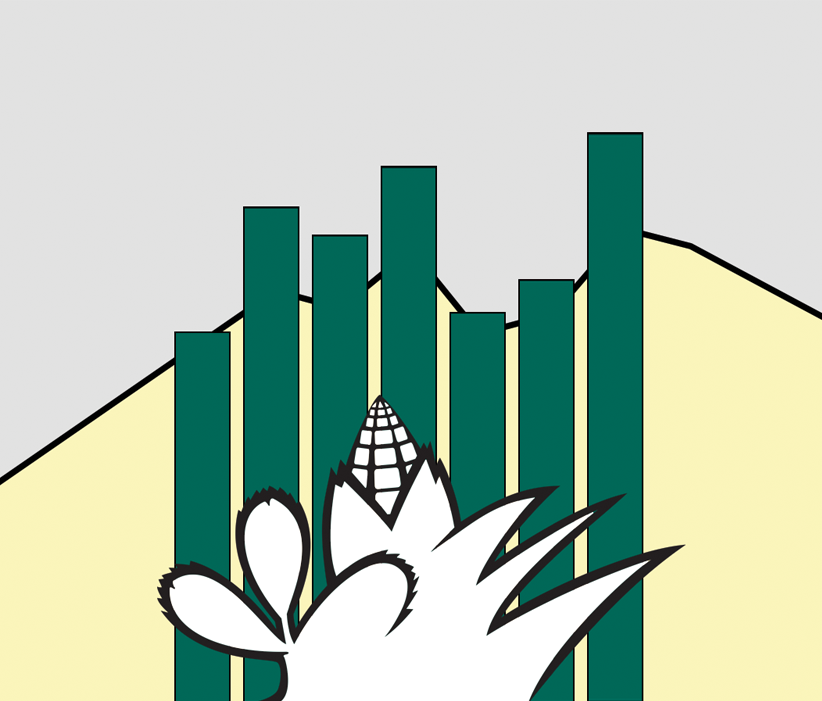With more and more new crop being produced, the hay market is simmering with slow demand and slower trade happening across the country. Take a closer look at prices and conditions in each region in the Progressive Forage Forage Market Insights column as of Aug. 14, 2024.
Moisture conditions fall short
Overall U.S. Drought Monitor maps indicate drought areas that are rising, after a few months of a break. As of Aug. 6, a pproximately 21% of U.S. hay-producing acreage (Figure 1) was considered under drought conditions, with 17% being reported the month prior. The area of alfalfa hay-producing acreage (Figure 2) under drought conditions was reported to be 25%, with 14% the month prior.


A snapshot of hay prices
Price data for 27 major hay-producing states is mapped in Figure 3, illustrating the most recent monthly average price and one-month change. The lag in USDA price reports and price averaging across several quality grades of hay may not always capture current markets, so check individual market reports elsewhere in Progressive Forage.

Dairy hay
The top milk-producing states reported a price of $256 per ton of Premium and Supreme alfalfa hay in the month of June, a $20 decrease from May. The price is $54 lower than what was reported in June 2023 (Table 1).

Exports
The total purchased U.S. alfalfa hay in June was 154,397 metric tons (MT), down 22% from May and down 11% from a year prior. Despite less hay purchased, China, Saudi Arabia and Japan continue to lead the charge in U.S. alfalfa hay imports with 54,544 metric tons, 33,365 metric tons and 30,211 metric tons of alfalfa hay purchased in June, respectively. Year to date, the U.S. has exported 1,167,451 metric tons of alfalfa hay.
Other hay purchases were similar with a 19% decrease in exports from May but nearly 2% growth from June 2023. Japan and South Korea posted the most purchased at 40,128 metric tons and 26,636 metric tons, respectively. Although Japan’s purchases were down 27% from a month prior while South Korea increased purchases by 5%, June’s exports brought the total other hay exported in 2024 to 541,923 metric tons.
Regional markets
- Midwest: In Nebraska, hay sales remained steady along with ground and delivered hay and alfalfa pellets. Demand was light overall and the western half of the state is dry with pasture conditions drying up as well.
In Kansas, hay movement is slow with demand down overall. No one seems interested in buying and contracts are the only detectable movement across the state.
In South Dakota, demand and movement have been lower and slower, and most producers are expecting it to remain quiet for the immediate future.
In Missouri, hay movement is expected to remain slow as pastures are plentiful and grass stocks are higher than previously expected at this time of year.
- East: In Alabama, hay prices are reported as steady with good supply and demand.
In Pennsylvania, no comparison with limited reporting available.
- Southwest: In California, trade activity and demand were moderate to good. Retail hay demand was strong to good, with dairy hay demand being moderate. Export hay demand was light.
In New Mexico, hay is being sold steadily with good demand.
In Oklahoma, hay trade has slowed to a standstill with little to no demand.
In Texas, hay prices are steady across all regions while hay trade is slow across the board.
- Northwest: In the Columbia Basin, movement is slow with not enough to detect a trend in prices.
In Montana, hay sold steady with new crop being available, continuing to slow movement.
In Idaho, demand and trade are slower than normal at this time of year.
In Colorado, trade activity was light and demand was also light.
In Wyoming, in a light test all reported hay sales were steady while demand was light.
Other things we are seeing
- Dairy: Based on FMMO advanced prices and current futures prices, the outlook for August regional uniform milk prices improves slightly. Already announced, the August 2024 advanced Class I base price is $21.32 per cwt, up 21 cents from July 2024 and $4.70 more than a year ago. It’s the highest Class I base price since January 2023. August Class II, III and IV milk prices will be announced Sept. 5. As of trading on July 30, the Chicago Mercantile Exchange (CME) Class III milk futures price closed at $19.83 per cwt for August, up just 4 cents from the July price. The Class IV milk futures price closed at $21.43 per cwt for August, up 12 cents from July. If Class III-IV futures prices hold, the August Class III-IV milk price gap will increase to $1.60 per cwt, continuing to provide some incentives for Class IV depooling.
- Cattle: U.S. beef export values reached $902.4 million in May, 3% higher than last year and the highest point since June 2023, according to USDA data compiled by the U.S. Meat Export Federation (USMEF). Total export volume was 110,133 metric tons, down 5% from a year ago but still the second-largest of 2024. According to the USMEF report, beef exports followed a similar trend January through May, increasing 5% year over year in value to $4.29 billion, despite a 4% decline in volume (533,578 MT). Japan, Mexico and Taiwan were the three biggest importers of U.S. beef, January to May.
- Land values: The U.S. farm real estate value, a measurement of the value of all land and buildings on farms, averaged $4,170 per acre for 2024, up $200 per acre (5%) from 2023. The U.S. cropland value averaged $5,570 per acre, an increase of $250 per acre (4.7%) from the previous year. The U.S. pasture value averaged $1,830 per acre, an increase of $90 per acre (5.2%) from 2023. See the InFocus in the Oct. 1, 2024, issue of Progressive Forage for more information.













